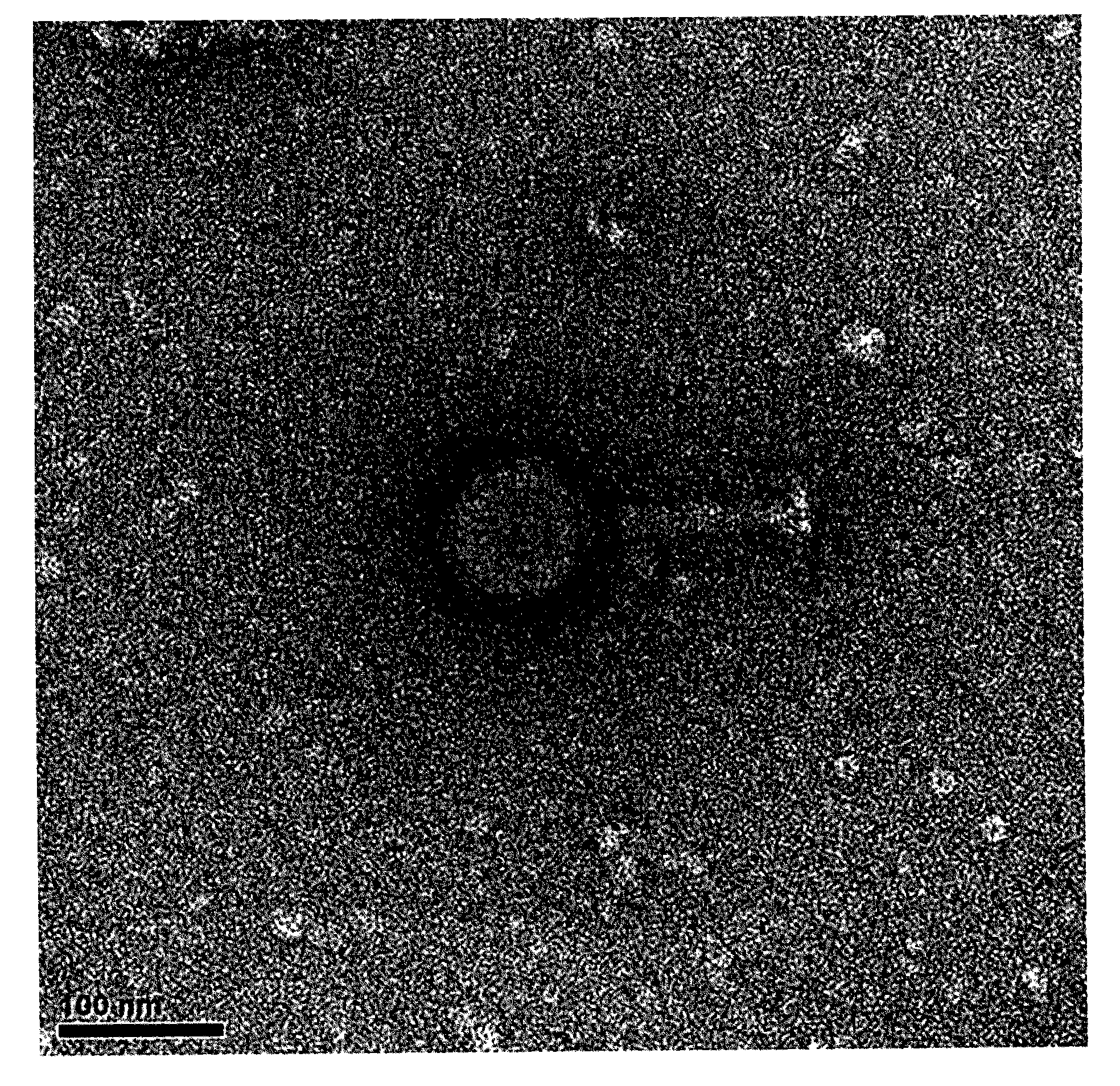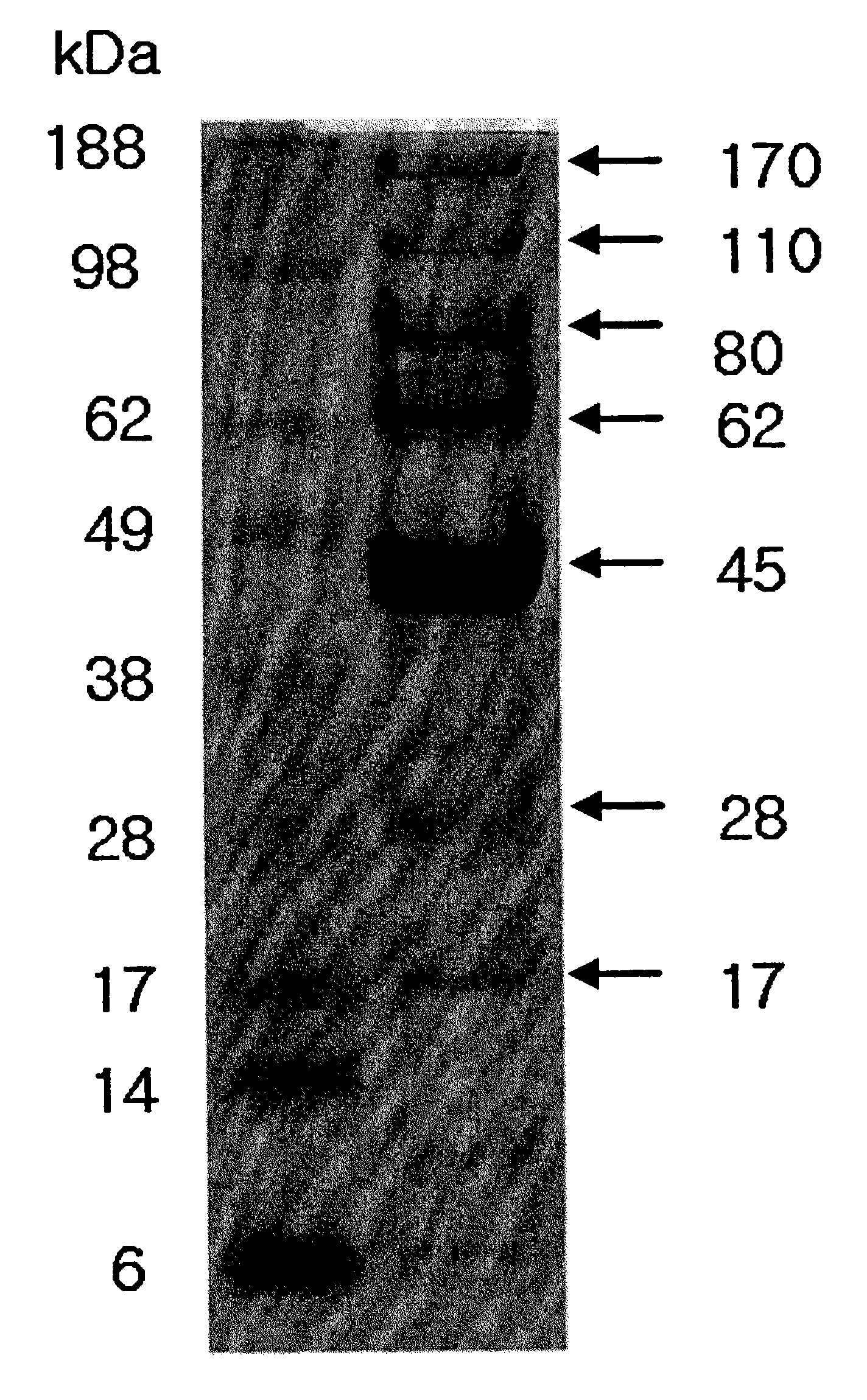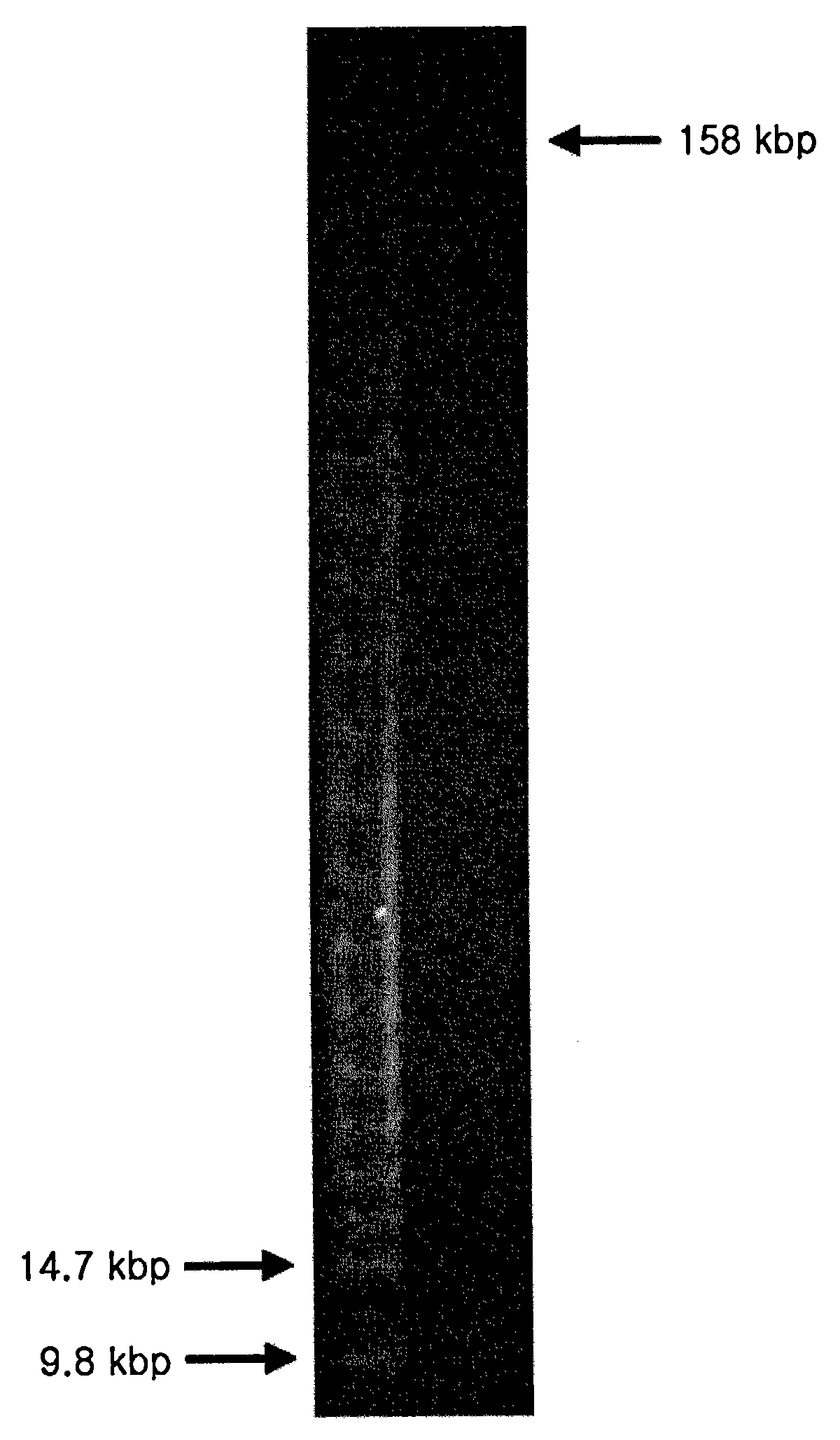Novel bacteriophage and antibacterial composition comprising same
A technology of phage and composition, applied in the field of new phage, to achieve the effect of excellent acid resistance
- Summary
- Abstract
- Description
- Claims
- Application Information
AI Technical Summary
Problems solved by technology
Method used
Image
Examples
Embodiment 1
[0082] Example 1: Salmonella phage isolation
[0083] 1-1. Phage screening and single phage isolation
[0084] Transfer 50 ml of samples from chicken slaughterhouse and sewage water into a centrifuge tube and centrifuge at 4000 rpm for 10 minutes. The supernatant was then filtered using a 0.45 μm filter. Mix 18ml sample filtrate with 150μl ST shaking medium (OD 600 = 2) Mix with 2ml of 10×Luria-Bertani medium (hereinafter referred to as LB medium, tryptone 10g; yeast extract 5g; NaCl 10g; final volume is 1L). The mixture was incubated at 37°C for 18 hours, and the medium was centrifuged at 4000 rpm for 10 minutes. Filter the supernatant with a 0.2μm filter. Mix 3ml 0.7% agar (w / v) and 150μl ST shaking medium (OD 600 = 2) Mix and plate on LB plate to make it a solid medium. Coat 10μl of culture filtrate on it and incubate at 37°C for 18 hours (0.7% agar is used as "top-agar" and the titration of phage lysate is performed on top agar, called soft agar Covering method (softagar o...
Embodiment 2
[0088] Example 2: Investigation of Salmonella infection with ΦCJ3
[0089] In order to examine the lytic activity of the selected phage against other Salmonella and ST, try to cross-infect with other Salmonella. As a result, ΦCJ3 did not infect SC (Salmonella enterica Serotype Choleraesuis), SD (Salmonellla enterica Serotype Derby), SA (Salmonella enterica subsp. Arizonae)), SB (Salmonella enterica subsp. Bongori), but specifically infected SG, SP, ST and SE (see Example 12). The results are shown in Table 1 below. The phage ΦCJ3 produced using SG as the host cell showed the same plaque size and plaque turbidity as well as the same protein pattern and genome size as those produced using ST as the host cell.
[0090] [Table 1]
[0091]
[0092] Serotype
Strain name
Plaque formation
Serotype
Strain name
Plaque formation
SE
SGSC 2282
O
SA
ATCC
13314
X
ST
ATCC 14028
O
SB
ATCC
43975
X
SG
SGSC 2293
O
SC
ATCC
10...
Embodiment 3
[0095] Example 3: Morphological investigation of bacteriophage ΦCJ3
[0096] The purified ΦCJ3 was diluted in 0.01% gel solution, and then fixed in 2.5% glutaraldehyde solution. After the sample was dropped on a carbon-coated mica plate (approximately 2.5×2.5 mm) and adapted for 10 minutes, it was washed with sterile distilled water. The carbon film was placed on a copper mesh and dyed with 4% uranyl acetate for 30-60 seconds, dried, and examined under a JEM-1011 transmission electron microscope (80kV, magnification×120,000~×200,000). As a result, the purified ΦCJ3 has morphological features including an isometric capsid and a long retractable tail, such as figure 1 > As shown in, this indicates that it belongs to the morphotype group of the Mycophagaceae family.
PUM
 Login to View More
Login to View More Abstract
Description
Claims
Application Information
 Login to View More
Login to View More - R&D
- Intellectual Property
- Life Sciences
- Materials
- Tech Scout
- Unparalleled Data Quality
- Higher Quality Content
- 60% Fewer Hallucinations
Browse by: Latest US Patents, China's latest patents, Technical Efficacy Thesaurus, Application Domain, Technology Topic, Popular Technical Reports.
© 2025 PatSnap. All rights reserved.Legal|Privacy policy|Modern Slavery Act Transparency Statement|Sitemap|About US| Contact US: help@patsnap.com



